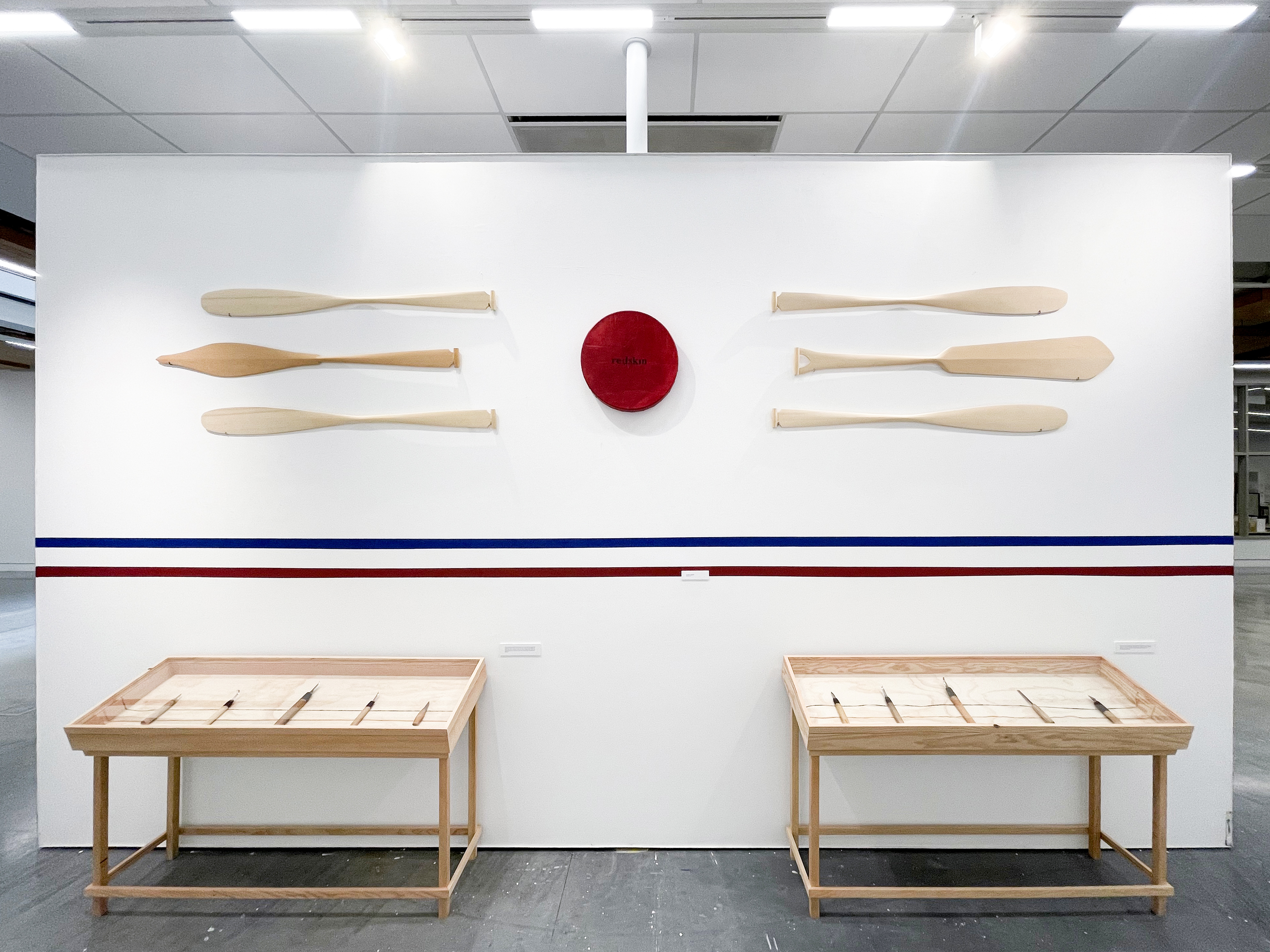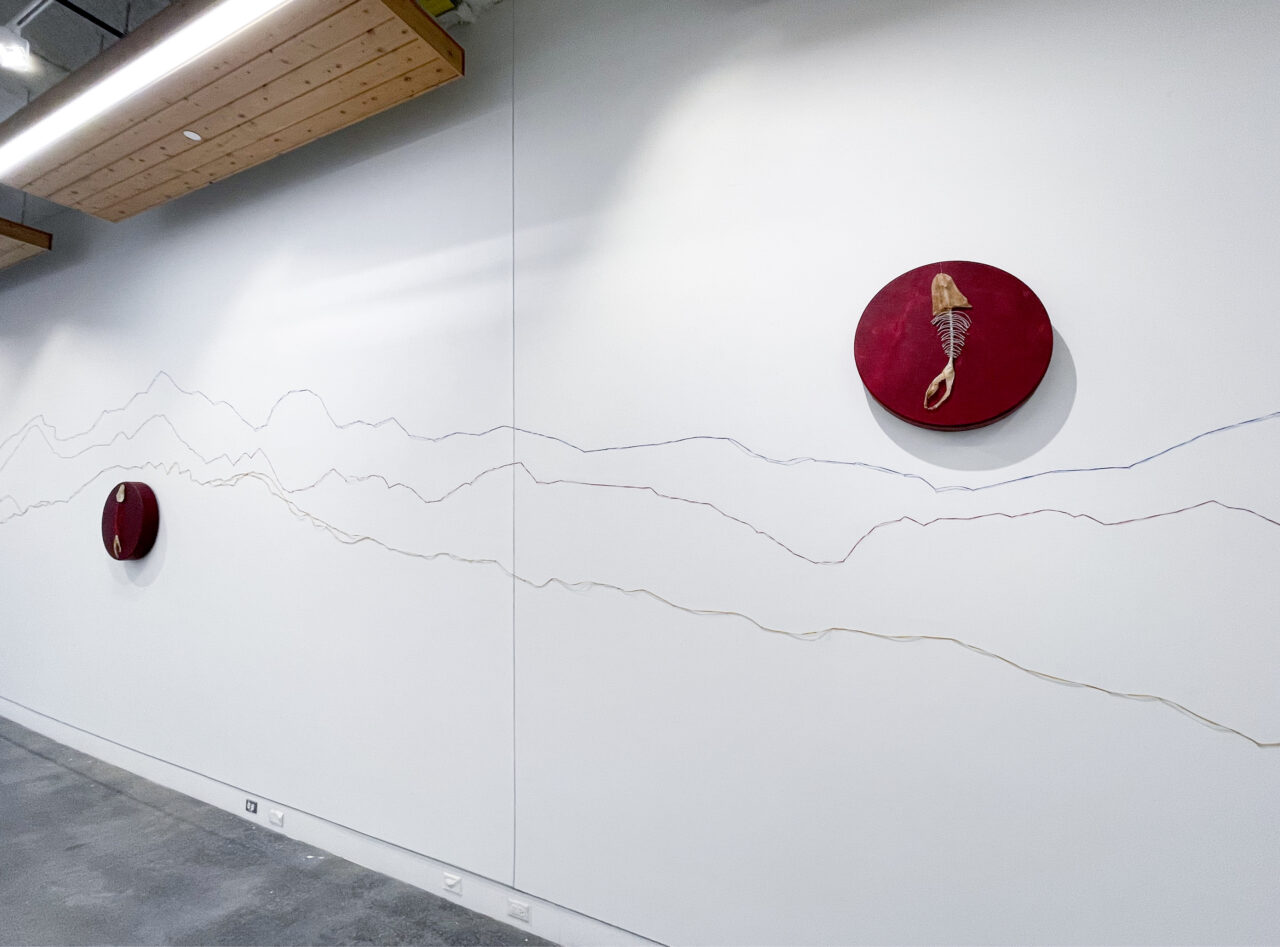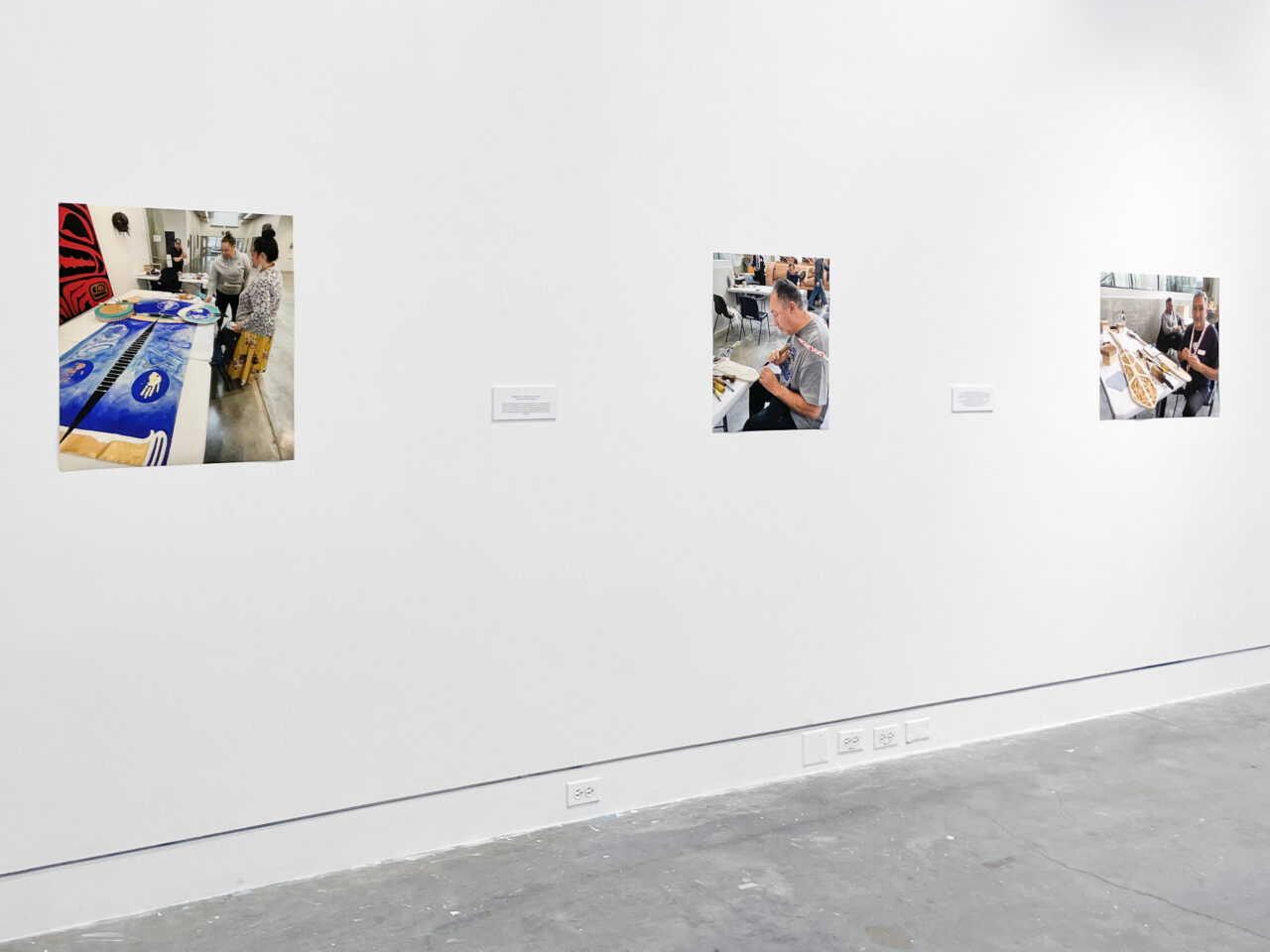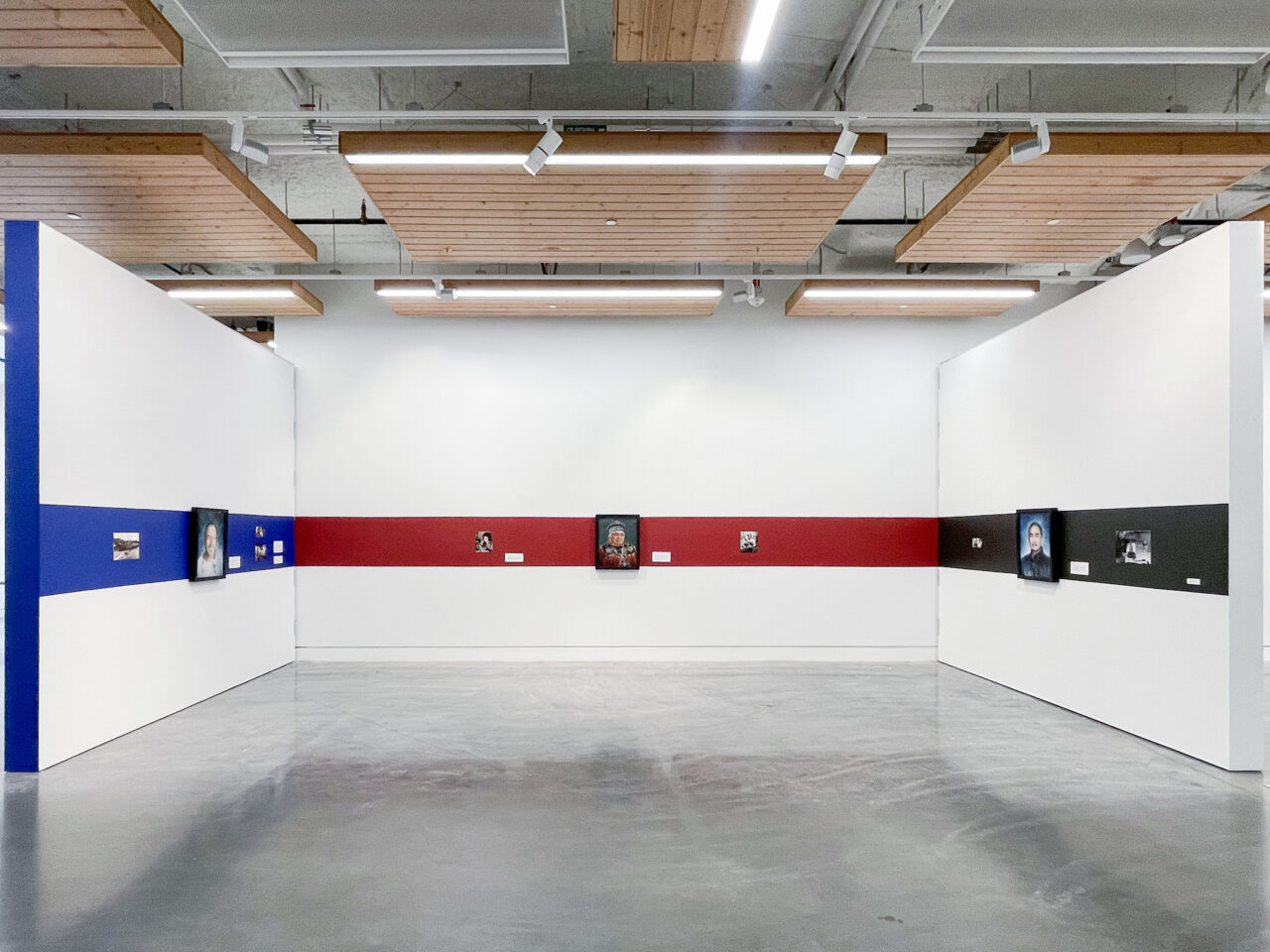‘Pacific Song of the Ancestors’ Exhibition Makes Space for Indigenous Joy

Ready-to-carve canoe paddles frame Brenda Crabtree’s dyed Red Skin drum. Below are natural-finish vitrines containing a variety of personalized and commercially made woodcarving tools. (Photo by / courtesy Zoë Laycock)
Posted on
Curated by ECU student Zoë Laycock, the show runs through Sept. 30 as a companion piece to the newly installed totem pole of the same title.
A new exhibition at Emily Carr University turns an Indigenous lens on the purpose behind building an art show.
Titled Pacific Song of the Ancestors, the show is curated by Anishinaabe Red River Métis artist, curator and ECU student Zoë Laycock (she/they). It serves as a companion piece to the Pacific Song of the Ancestors totem pole by Master Carvers Dempsey Bob (Tahltan and Tlingit), Stan Bevan (Tahltan Tlingit and Tsimshian) and Lyonel Grant (Māori and Pakeha), which will be formally unveiled during a Sept. 28 ceremony at ECU.
“We wanted to focus on the relationships between Indigenous cultures here in BC through the stories of Dempsey, Stan and former Director of Aboriginal Programs at ECU Brenda Crabtree. We also wanted to focus on the cross-cultural sharing that happened with Lyonel Grant and the folks from New Zealand,” Zoë says of the vision behind the show. “Looking at how the pole came to be as an artwork and as a physical manifestation of that Indigenous cultural sharing was really important.”

A collaborative installation, created for the exhibition by Zoë with help from Leila Berg & Aaron Rice, is framed by a pair of animal-hide drums with hand-fabricated fish skeletons by Brenda Crabtree. (Photo by / courtesy Zoë Laycock)
The exhibition is not your typical gallery show. Zoë decided against an emphasis on conventional art objects, opting instead to include bespoke installations, archival photos and raw materials. For instance, a web of sinew stretched along a wall depicts the outlines of mountain ranges found in the home territories of the three Pacific Song of the Ancestors carvers. A pair of drums by Brenda Crabtree hangs on either side of the work.
The drums are “representative of two suns, one on either side of the world, rising over these territories,” Zoë tells me. “The installation is also a reference to a connection to the land through material practice.”
Candid photos of the artists working in community are another main element of the exhibition. These images represent a stark departure from the kinds of carefully executed art photographs typically seen on gallery walls. In part, this choice represents a way of creating access for Indigenous students who may feel alienated by the colonial standards that typically govern art shows, she says.

“I think there’s something to be said about taking up space to show Indigenous joy,” Zoë says of her decision to include candid photographs of the artists and their communities in the exhibition. (Photo by / courtesy Zoë Laycock)
“I think there’s something to be said about taking up space to show Indigenous joy and to show Indigenous people coming together to create things,” they continue. “Whether you’re an internationally renowned carver or you’re finishing your undergrad, being able to use and belong to a space like this — to really inhabit it — was definitely a driving force for this exhibition.”
But Zoë notes their curatorial decisions also reflect the themes that animate the totem pole. The work represents the decades Brenda Crabtree spent building connections and community engagement through the AGP. And it represents the connections and cultural sharing between the carvers and their communities.
These themes, in turn, are part of the mission and purpose behind the AGP itself.
“A lot of our Indigenous students, myself included, have seen the AGP as a place of connection,” Zoë says. “We’re coming to a place where we are visitors to the Host Nations, but we’re also coming to a place that feels like we’re able to engage in sharing as Indigenous people from different areas. “We’re not trying to claim territory, but we do know that, as Indigenous people, we can be hosted and be guests and feel at home wherever we have a space to build and share together.”

Portraits (L to R) of Master Carvers Lyonel Grant, Dempsey Bob and Stan Bevan by artist Chris Hopkins are surrounded by photos drawn from the artists' personal archives. (Photo by / courtesy Zoë Laycock)
The Pacific Song of the Ancestors exhibition runs through Sept. 30 on the main floor at Emily Carr University. It was curated with help from research assistants Leila Berg and Aaron Rice.
The Pacific Song of the Ancestors totem pole will be on view from Sept. 29 onward. Members of the public are welcome, and attendance is free.
Visit the AGP online to learn more about their wide range of programming and opportunities.